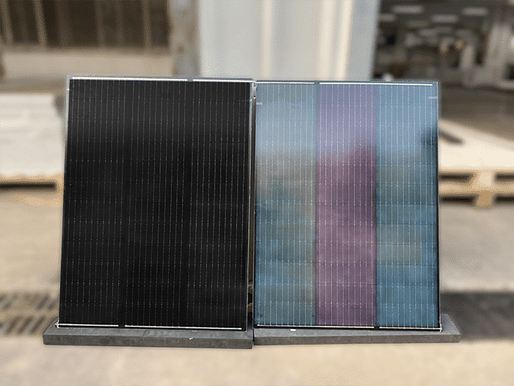

Researchers from the American Chemical Society have developed solar panels that can take on a range of colors without sacrificing their efficiency, improving their attractiveness and, thus, their marketability.
As the popularity of solar panels has grown, their application isn’t solely reserved for rooftops anymore but building façades and other more visible parts of buildings. Their standard black hue, however, limits how visually appealing buildings can be, with some architects describing solar panels as ugly and difficult to integrate into projects.
Solar panels take their dark color to absorb as much light as possible. However, other attempts to add color to them have produced less power, higher costs, and an undesirable iridescence.
The team of researchers, including Tao Ma, Ruzhu Wang, and colleagues, aimed to develop a way to color solar panels using a structural material that would be easy and inexpensive to apply and maintain their ability to produce energy efficiently.
The team sprayed a thin layer of a material called photonic glass onto the surfaces of solar cells. The glass is made of microscopic spheres of zinc sulfide that allow the most light to pass through. Some light is reflected back based on the sizes of the spheres. Using this approach, the researchers created solar panels that took on blue, green, and purple hues. The panels’ efficiency of power generation only dropped from 22.6% to 21.5%. The researchers found that these solar panels maintained their color and performance during durability tests and could be scaled up in manufacturing.
The team is now looking to create a more saturated and broader range of colors.
No Comments
Block this user
Are you sure you want to block this user and hide all related comments throughout the site?
Archinect
This is your first comment on Archinect. Your comment will be visible once approved.